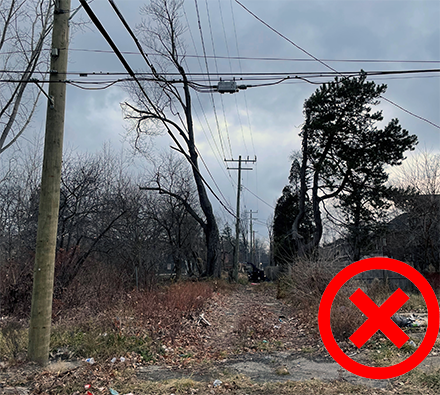HDC Fences, Paving, and Landscaping
block-detroitminew-views-block-news-events-block-1,News & Events*block-detroitminew-views-block-related-links-block-1,Related Links*block-detroitminew-views-block-video-playlist-block-1,Videos*documents-block,Documents*block-detroitminew-views-block-forms-block-1,Forms*block-views-block-faq-block-1,FAQs*block-detroitminew-views-block-district-map-block-1,District Map*block-views-block-council-office-directory-block-1,Office Directory*block-detroitminew-views-block-contacts-block-3,Contacts*block-detroitminew-views-block-contacts-block-4,Contacts*block-detroitminew-views-block-council-member-bio-block-1,Bio*block-detroitminew-views-block-sub-sections-block-1,Sections*block-detroitminew-views-block-web-apps-block-1,Web Apps*block-detroitminew-views-block-news-events-block-4,News*block-detroitminew-views-block-news-events-block-3-2,Events*block-detroitminew-views-block-contacts-special-block-1,Staff*block-detroitminew-views-block-statements-block-1,Statements*block-detroitminew-views-block-newsletters-block-1,Newsletters*block-detroitminew-views-block-newsletters-block-3,Ordinance*block-detroitminew-views-block-newsletters-block-2,Resolutions*block-detroitminew-views-block-newsletters-block-4,Memos
Historic Design Guidelines for Site Elements
City of Detroit - Historic District Commission
Table of Contents:
- Introduction to Historic Design Guidelines for Site Elements
- Introduction
- Applicability
- General Principles
- Use of the Guidelines
- Landscaping
- Grading/Topography
- Introduction - Why important
- Historic Features
- Examples of correct and incorrect Grading
- Vegetation
- Trees
- Other Plantings
- Other Site Element Considerations
- Accessibility
- Health and Safety
- Environmental
- Energy Efficiency
- Grading/Topography
- Landscape Structures, Furnishings & Lighting
- Fences, Walls, and Hedgerows
- Site Furnishings: Arbors, Furnishings
- Water Features
- Landscape Lighting
- Security Features
- Paving
- Streetscapes: Residential, Non-residential and Mixed-use
- Driveways and Parking (Curbs)
- Sidewalks and Walkways
- Patios
- Resources
- Definitions
- Reference Material
- Contact Information
Introduction to Historic Design Guidelines for Site Elements
Why are Site Elements in Historic Districts important?
Historic landscapes are composed of features/elements which are organized in space, including small-scale features such as fences, shrubs or statuary, or patterns in a neighborhood such as tree-shaded, brick-lined streets, which define the spatial character of the landscape. Larger, organizational elements in the landscape can create historic land patterns and refers to organization of the landscape like rooms in a house. This spatial organization may go beyond the limits of your property, but have a relationship to your neighbors- such as the topography of your front lawn all sharing a slope to the front walkway. The overall arrangement and the interrelationship of these features, or site elements, as they existed during the period of historic significance are critical assets in preserving the cultural landscape and the neighborhood’s identity.
The uniform pattern and relationships of front lawns, building setbacks and open spaces, street trees, fencing and sidewalks contribute to a collective impression of a historic district. When historic landscape features are removed or relocated, or elements that are not compatible with the site are introduced, site vistas are destroyed, and the historic character of a district is diminished. One need only recall the great American elm trees that formed natural green canopies over the streets of so many Detroit neighborhoods up until the 1950s and how the disappearance of those trees had impacted the character of those neighborhoods to understand this concept.
The Historic District Commission has complied these design guidelines to assist you in the following Site Element categories:
- Landscaping
- Grading/Topography
- Vegetation: Trees and Plantings
- Accessibility, Health/Safety, Environmental and Energy Efficiency
- Landscape Structures:
- Fences, Walls, and Hedgerows
- Site Furnishings: Arbors and Furnishings
- Water Features: Fountains, Pools, etc.
- Landscape Lighting & Security Features
- Paving
- Streetscapes
- Driveways and Parking
- Walkways
- Patios
Applicability
The Historic Design Guidelines for Site Elements generally apply to all site element modifications on properties that are located within a locally designated historic district or that are individually designated landmarks. This section specifically applies to all modifications to site elements. In considering whether to recommend approval or disapproval of an application for a Certificate of Appropriateness (COA) for site elements, the Historic District Commission (HDC) shall be guided by the Secretary of the Interior’s Standards for Rehabilitation, the Resolutions adopted by the HDC, these Historic Design Guidelines, and any additional design guidelines adopted by the City.
General Principles
The following General Principles for Site Elements will be considered during the review process in conjunction with the Historic Design Guidelines contained in this section.
Principle #1: Respect the Historic Context
New site elements should complement, not detract from, historic site elements, the character of the historic structure they serve, and the surrounding district. When considering specific site elements (e.g., streetscape, topography) the surrounding context is important, since the integrity of various elements varies from block-to-block.
Principle #2: Routine Maintenance is Essential for Preservation
With proper maintenance, many historic site elements can last for centuries. Routine maintenance of walls, sidewalks, monuments, landscaping, curbing, and other decorative and functional site elements is essential to prevent deterioration
Principle #3: Preservation of Features in Place is Preferred over Replacement
Maintaining and repairing historic site elements is preferred over replacing those elements as to maintain the character of the public right-of-way and district. However, if elements are deteriorated beyond repair (more than 50%), in-kind replacement using new components that match the original in form and materials is favored while replacement with comparable substitutes will be considered.
Principle #4: More Flexibility in Treatment and/or Replacement May be Considered in Locations Not Visible from the Public Right-of-Way:
Site elements that are not visible from the public right-of-way are less likely to detract from views of the historic structure or the overall character of the district. More flexibility in the treatment and/or replacement of site elements located in rear yards and other areas of the site that are partially or wholly concealed from the public right-of-way may be considered.
These guidelines contain numerous pictures, illustrations, drawings, and examples of projects that have successfully met, or failed to meet, the qualities that the guidelines address. Examples are provided only to illustrate and show context. They shall not be construed as the only possible design solutions allowed.
Landscaping
Grading
The shape of the ground plane and its height or depth is a character-defining feature of the landscape. Grading may occur naturally or because of human manipulation. For example, grading may contribute to the creation of outdoor spaces, serve a functional purpose, or provide visual interest. Graded features, such as sloped front lawns, raised lots, and other distinctive site design elements, help define the unique character of each district and of individual streets or blocks within each district. Altering these features, such as through the installation of a retaining wall, interrupts the visual continuity of the historic streetscape and detracts from the character of the district.
Grading Guidelines
- Historic Grading - Avoid significantly altering the elevation of a property (i.e., extensive grading). Do not alter character-defining features such as berms or sloped front lawns that help define the character of the public right-of-way. Maintain the established lawn to help prevent erosion. If turf is replaced, new plant materials in these areas should be low-growing and suitable for the prevention of erosion.
- New Construction - Match the historic grade of adjacent lots prevalent along the block face for new construction. Do not excavate raised lots to accommodate additional building height or an additional story for new construction.
- New Elements - Minimize changes in grade resulting from new elements, like driveways and walkways, through appropriate siting and design. New site elements should work with, rather than change, character-defining grades when possible.
Correct
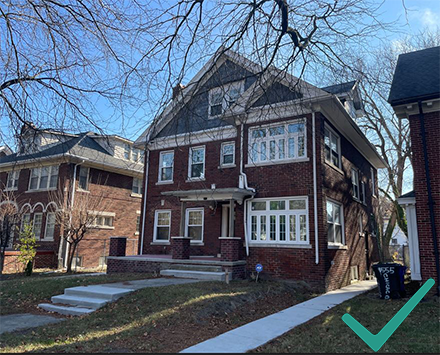
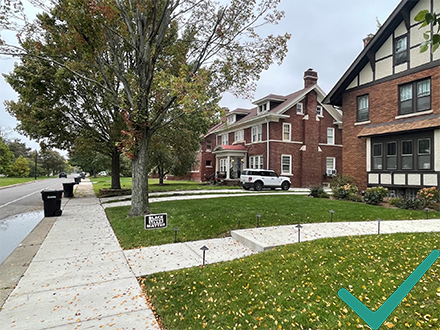
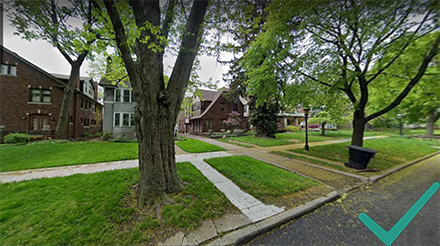
Incorrect
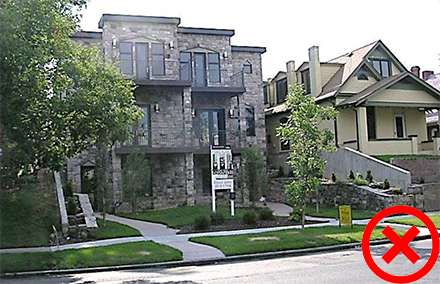


Vegetation
Vegetation features may be individual plants, as in the case of a specimen tree, or groups of plants such as street trees along the public berm, foundation plantings or gardens. (For hedgerows, please see the section on Fence, Walls and Hedgerows.) Vegetation includes evergreen or deciduous trees, shrubs, lawns, ground covers, and both woody and herbaceous plants. Vegetation may derive its historic significance from historic cultural associations, horticultural value, aesthetic, or functional qualities. It is a dynamic component of the landscape’s character; therefore, the treatment of cultural landscapes must recognize the continual process of growth, seasonal change, and death of plants. The character of individual plants is derived from habit, form, color, texture, bloom, fruit, fragrance, scale, and context. The Commission’s guidelines for this section are divided into lawns/plantings and trees.
Lawns and Plantings
Historic landscapes provide clues to the past and aid in the overall interpretation of our historic districts. Lawns and plantings historically establish a pattern language in the landscape. In many historic districts they are articulated with a front and rear backyard with open lawns and foundation plantings and may also include a streetscape berm, where typically street trees are planted. While some historic districts feature sweeping lawns and formal elements, many other districts feature a divers palette of landscape features including native plantings. Water conservation strategies should be implemented in a manner that responds to the historic context while meeting present day conservation needs.
Lawn and Plantings Feature Guidelines:
- Historic Gardens - Maintain front yard gardens when appropriate within a specific historic district.
- Historic Lawns - Do not fully remove and replace traditional lawn areas with impervious hardscape. Limit the removal of lawn areas to mulched planting beds or pervious hardscapes in locations where they would historically be found, such as along fences, walkways, or drives. Low-growing plantings should be used in historic lawn areas; invasive or large-scale species should be avoided. Historic lawn areas should not be reduced by more than 50%.
- Native Plants - Select native plants that thrive in local conditions and reduce watering usage. See the City of Detroit’s Recommended Plant List for a list of appropriate materials and planting methods. Select plant materials with a similar character, growth habit, and light requirements as those being replaced.
- Plant Palettes - If a varied plant palette is used, incorporate species of taller heights, such informal elements should be restrained to small areas of the front yard or to the rear or side yard so as not to obstruct views of or otherwise distract from the historic structure. Species selection and planting procedure should be done in accordance with the guidance from the City’s forestry department and their “do not plant list” and “recommended plant list”. For historic gardens, select shrubs or plants that are similar to those that need replacement.
- Maintenance - Maintain existing landscape features. Do not introduce landscape elements that will obscure the historic structure or are located as to retain moisture on walls or foundations (e.g., dense foundation plantings or vines) or as to cause damage.
- Hedgerows - See Fences, Walls, and Hedgerows section
- Mulch and Gravel - Do not use rock mulch or gravel as a wholesale replacement for lawn area. If used, plantings should be incorporated into the design. Mulch should not be used as a wholesale replacement for plant material. Mulch with appropriate plantings should be incorporated in areas where appropriate such as within a planting bed.
Correct

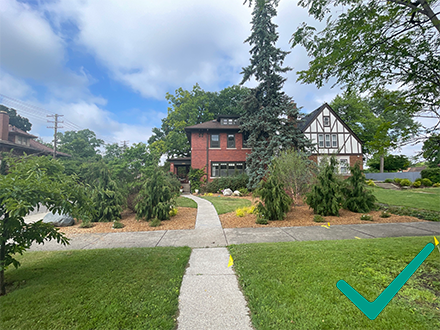
Incorrect
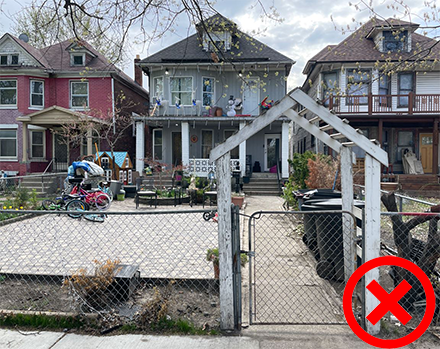

Trees
In the early 1900s-1950’s, Detroit’s prolific tree canopy dominated by the American elm tree gave the city its moniker the “Paris of the Midwest”. In the 1960-80s, Dutch elm disease decimated this canopy and the City primarily replaced these trees with silver maple, Norway maple and ash trees for their rapid growth characteristics. When the Emerald Ash Borer arrived in 1999-2000, another wave of tree canopy destruction hit Detroit’s historic tree canopy. Coupled with lack of budget for tree maintenance, weed-tree species control and past planting practices, Detroit’s canopy was reduced to 24% coverage. Preserving and maintaining quality heritage trees, planting a diversity of resilient trees to restore the historic canopy is a strategy to restore Detroit's historic landscape.
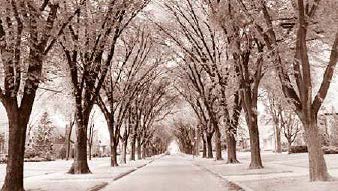
Tree Guidelines
- Preservation - Preserve and protect from damage existing mature trees and heritage trees. Historic-aged trees are considered those that are 8” or more DBH (diameter at breast height or 4.5 ft above grade) and not considered a “nuisance” tree, a danger to a historic element or is itself an invasive species. A certified arborist can establish the species and health of the tree, as well as recommend any treatment to preserve the tree.
- New Trees - Select new trees based on site conditions. Avoid planting new trees in locations that could potentially cause damage to a historic structure or other historic elements. For historic landscapes, select trees that are similar to those that are in need of replacement. Species selection and planting procedure should be done in accordance with the guidance from the City’s forestry department and their “do not plant list” and “recommended plant list”.
- Maintenance - Proper pruning encourages healthy growth and can extend the lifespan of trees. Avoid unnecessary or harmful pruning, such as “sky to ground” pruning practices. Avoid timing of pruning that can cause disease or harm to other species. A certified, licensed arborist is recommended for the pruning of mature trees and heritage trees.
Correct
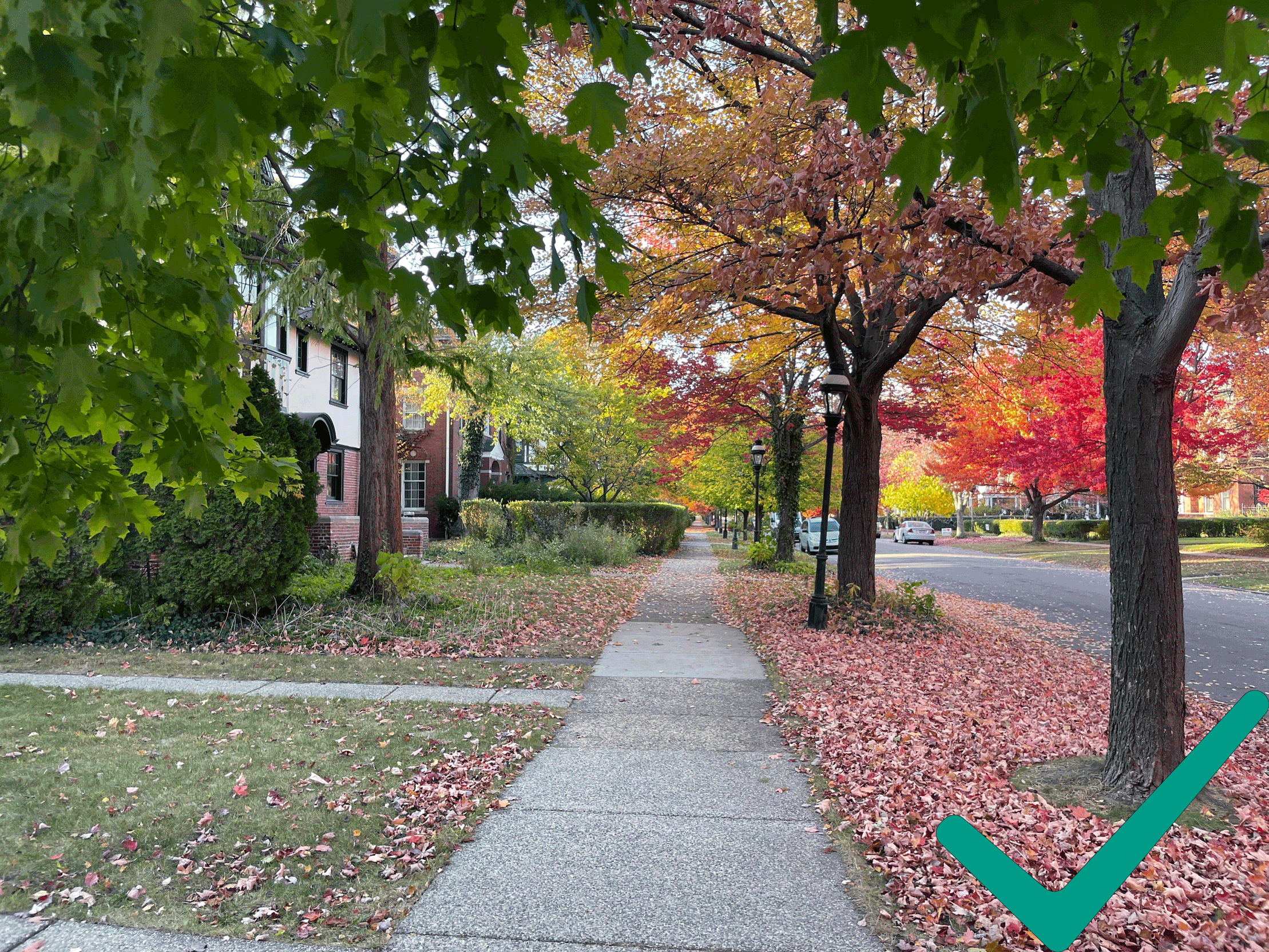
Incorrect
